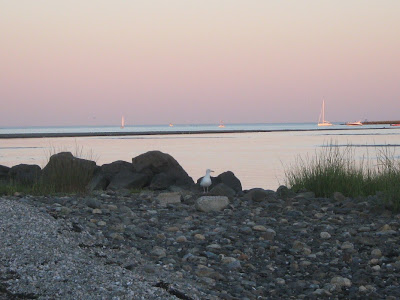Fall is well and truly here, with biting winds. Late after work the other day, while watching a peculiar Canada goose with a stumpy neck, I thought my fingers were going to snap off like those icicles that form in the freezer. Okay, so the goose was distinctly different to the other Canada geese in the flock, and maybe it was a lesser Canada goose or . . . well, normally I would have been quite interested, but what my mind was consumed by was how glad I was that though all manner of very important things have broken or fallen off my old car and it makes a symphony of strange and somewhat disturbing noises, miraculously the heated seats still work.
And dinner. I had room in my brain for thoughts of dinner.
Perhaps I am not the only cold and hungry soul out there for whom outdoor pursuits are a good excuse for a slap-up hot meal. So I offer up my antidote to a cold afternoon: easy hearty chicken soup with sweet Italian sausages.
Chicken soup for the birder's soul stomach
Serves: 6 birders who've been standing around for hours on a chilly day
Throw the following in a big pot:
4 stalks of celery, sliced
1/2 butternut squash, peeled and cubed (that's 1/2 butternut pumpkin if you're in Australia)
4 medium-sized carrots, peeled and sliced
1 big potato, peeled and cubed
kernels cut from 1 corncob
6 medium-sized mushrooms (portobellos are good), sliced fairly finely
1 big onion, diced
1 clove of garlic, peeled, but it's okay to leave whole as it melts into the soup
4 skinless chicken thigh fillets, chopped into bite-sized pieces (thank you, feathered friends)
1 quart (1 litre) of chicken stock
1 teaspoon or so of salt
black pepper
a good sprinkling of dried parsley
bay leaf
Bring all this to a gentle boil, then turn it down and simmer for about 45 minutes, or until all the veggies are nice and soft.
While it's simmering, cook 4 sweet Italian sausages and slice them.
Rinse and drain a can of cannellini beans.
Add the sausages and beans to the soup and let them warm up for a few minutes. Taste to see if it needs more salt and pepper.
Eat with crusty bread rolls while ruminating on an obscure bird you saw that day.





























-3.jpg)
-10.jpg)
-12.jpg)
-8.jpg)












a.jpg)
bFGallo.jpg)








